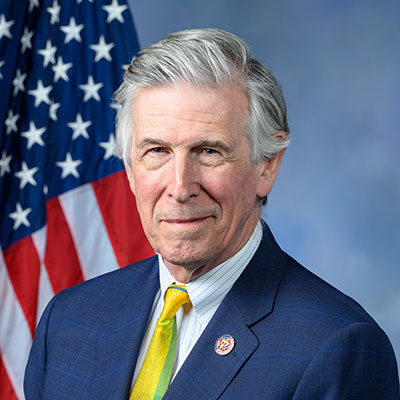Press Releases
Beyer And Spanberger Press CDC On COVID-19 Variants
Washington,
January 19, 2021
Tags:
COVID-19 Pandemic
Reps. Don Beyer (D-VA) and Abigail Spanberger (D-VA) wrote to Centers for Disease Control and Prevention (CDC) Director Robert Redfield today seeking answers on CDC’s viral genetic surveillance infrastructure. The Members wrote: “A more contagious variant of SARS-CoV-2, B.1.1.7, first appeared in the UK and only took three months to take over and become the dominant strain in that country’s outbreak. It is now spreading across the United States, but where it exists and at what point it first arrived here is unclear. It’s become quite apparent that the U.S. is not systematically or thoroughly collecting and tracking viral genetic samples. It’s impossible therefore to fully landscape or track SARS-CoV-2 mutations... “The U.S. needs to be able to stop new variants in their tracks before they transmit out of control. But that’s not possible if the collecting and tracking infrastructure remains haphazard...” As new variants of SARS-CoV-2 have appeared in the U.S., details on its transmission remain unclear. Since the start of the pandemic, researchers in the U.K. have uploaded 151,859 individual SARS-CoV-2 sequences, the highest number of sequences shared by any country in the world. U.S. labs have only uploaded 69,111 sequences. The more contagious variant is expected to spread widely in the U.S. and lead to further strains on the health care system. A signed copy of the letter is available here, and text follows below. Beyer serves on the House Committee on Ways and Means, which has partial jurisdiction over health care. He previously asked CDC and FAA to require all international travelers to test undergo coronavirus testing before entering the United States in light of the new variants, a requirement which has since been put in place.
***
Director Robert R. Redfield, M.D. Dear Director Redfield: We write to request a briefing on the status of CDC’s genetic surveillance. A more contagious variant of SARS-CoV-2, B.1.1.7, first appeared in the UK and only took three months to take over and become the dominant strain in that country’s outbreak. It is now spreading across the United States, but where it exists and at what point it first arrived here is unclear. It’s become quite apparent that the U.S. is not systematically or thoroughly collecting and tracking viral genetic samples. It’s impossible therefore to fully landscape or track SARS-CoV-2 mutations. Another more infectious variant, the 501v.2, was discovered in South Africa, but we do not know if it too has made its way to the U.S. because of our underdeveloped surveillance infrastructure. More recently, two U.S.-originated variants of the coronavirus were discovered, one of which has become the dominant variant in its local area just three weeks. As variants keep developing, if they are more transmissible, they can lead to more cases. And more cases can not only compound the strain on hospitals, many of which are already stretched to capacity due to high infection rates across the country, but also lead to more deaths. We recognize that the CDC does have a genetic surveillance program called SPHERES (SARS-CoV-2 Sequencing for Public Health Emergency Response, Epidemiology, and Surveillance). However, SPHRES pales in comparison to its U.K. counterpart which has been able to successfully identify and track variants across its country. The inefficiencies of the U.S. program are all the more glaring and problematic after Congress dedicated significant funding to CDC to develop such an infrastructure. The U.S. needs to be able to stop new variants in their tracks before they transmit out of control. But that’s not possible if the collecting and tracking infrastructure remains haphazard. Given those considerations, we request that you brief us on the following:
Please contact Kate.Schisler@mail.house.gov or Nicholas.Widmyer@mail.house.gov to set up the briefing at your earliest convenience. Sincerely, |

